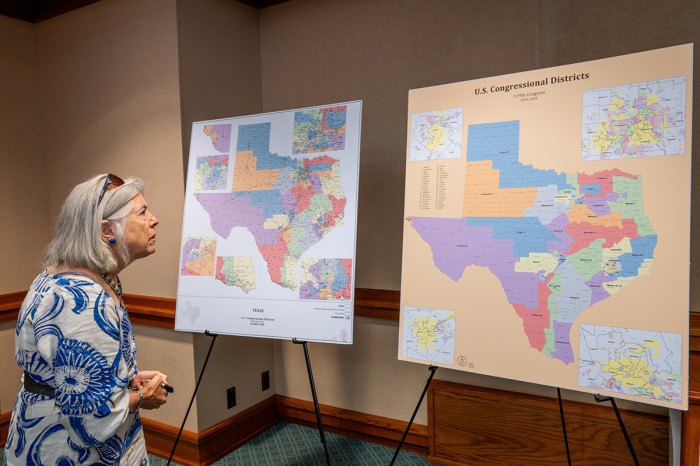
The state legislatures of both Texas and California have passed new congressional maps as the mid-decade redistricting battle continues ahead of the 2026 midterm elections.
The Republican-controlled Texas House of Representatives passed Texas House Bill 4 in a party-line 88-52 vote on Thursday, paving the way for the state to adopt new congressional districts ahead of next year’s elections. The Republican-controlled Texas Senate had passed its own version of the legislation last week in a unanimous vote as Democrats fled the state to protest the imposition of maps that would make the state’s congressional districts in the United States House more favorable to Republicans.
Once the two chambers iron out the differences between the two bills, new congressional districts are set to go to the desk of Republican Gov. Greg Abbott for approval. Although the composition of the districts differs slightly in the House and Senate versions of the legislation, the maps are expected to create 30 districts that backed Republican President Donald Trump in the 2024 presidential election and eight districts that supported Democrat Kamala Harris.
Currently, Republicans hold 25 of the state’s 38 districts. Democrats represent the other 13, including two that backed Trump in last year’s presidential election.
The push to create a new congressional map in Texas that would buttress the Republicans’ narrow majority heading into next year’s election has resulted in the Democrat-dominated California Senate and California Assembly passing their own maps designed to create 47 congressional districts that backed Harris and just five that voted for Trump. Currently, California has 43 Democrats and nine Republicans in its delegation to the U.S. House.
Unlike in Texas, where the creation of new districts is based solely on Abbott’s approval, a signature from Democrat Gov. Gavin Newsom will not automatically result in a new congressional map for California. Since California uses an independent commission to draw its congressional districts, any change to the map will have to go to the voters for approval. Voters are slated to weigh in on the new maps in a Nov. 4 special election and the new districts would only go into effect if the referendum passes.
Efforts to engage in mid-decade redistricting reflect the tightly divided control between the two parties in the U.S. House. Republicans won 220 seats in the 2024 election while Democrats won 215.
Texas and California are not the only states that could have new congressional maps ahead of next year’s midterm elections. The Republican-led states of Florida, Indiana and Missouri, as well as the Democrat-led states of Maryland and New York, are among those considering adopting new maps. New maps approved in any state, including Texas and California, will almost certainly be subject to legal challenges.
The anticipated widespread adoption of mid-decade redistricting marks a departure from the norm, which involves states creating new congressional districts immediately following the publication of the new U.S. census that reflects the most recent population figures. Since the census takes place in years ending “0,” new maps are typically drawn ahead of years that end in “2” and are usually left in place for the entire decade, except in the case of court challenges.
Ryan Foley is a reporter for The Christian Post. He can be reached at: ryan.foley@christianpost.com















